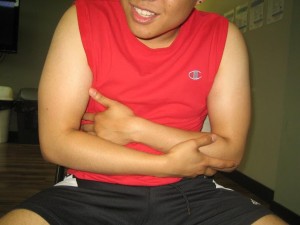Chest pressure can occur with or without pain and can manifest at various times or a variety of reasons. Some individuals describe chest pressure as a sensation of a tight band around the chest or there is a heavy object sitting atop it.
The pressure sensation can be caused by a condition that occurs in any part of the chest including the esophagus, chest wall muscles or the heart. In case the symptoms occur after eating, they might be linked to certain foods, how the individual ate or a medical condition. In case the symptoms are severe or accompanied by rapid heart rate, pain or difficulty breathing, it is best to seek medical care as soon as possible.
Possible causes
There are certain conditions linked with chest pressure after eating that can range from mild to serious. Always bear in mind that heartburn is common that is usually mild but can worsen if the individual bends over or exercises after a meal.
Frequent heartburn can indicate gastroesophageal reflux disease (GERD) which involves the leakage of stomach contents from the stomach back into the esophagus which is called acid reflux. Take note that reflux is responsible for causing heartburn. The chest pressure can also stem from anxiety, pregnancy, eating too fast or too much or hiatal hernia. The chest discomfort that persists more than a few minutes can indicate a heart attack.

Food triggers
There are certain foods that can elicit chest pressure linked to heartburn, hiatal hernia and GERD. The usual triggers of the three conditions consists of acidic foods such as coffee, tomato sauce and orange juice as well as chocolate, alcohol, spearmint, peppermint, fatty foods, carbonated beverages, full-fat dairy products and fatty meats.
Dietary changes
If an individual is prone to chest pressure, a doctor should be consulted to determine if a medical condition is responsible. A diet that includes antioxidant-rich foods such as tomatoes, berries, bell peppers and squash as well as foods rich in B vitamins and calcium such as almonds, beans, whole grains and dark leafy greens can help minimize the symptoms of GERD, hiatal hernia and heartburn.
Avoid refined foods such as sugary foods, enriched pasta and white bread while lean protein sources such as soy, lean meats and cold-water fish in the diet. It is vital to stay properly hydrated by drinking water throughout the day and avoid foods that trigger or worsen the symptoms.
Lifestyle changes
The best way to minimize the risk for chest pressure and other symptoms of heartburn, GERD and hiatal hernia is to avoid lying down after eating, exercise regularly but not after a meal, stop smoking, slow down the pace while eating and maintain a healthy weight.
A heart-healthy diet focuses on whole, fiber-rich foods such as fruits, vegetables and whole grains while limiting unhealthy sources of fat such as butter, red meat and cheese can reduce the risk for heart attack and other heart conditions. Cold-water fish such as mackerel, salmon, flounder and halibut provide healthy fats called omega-3 fatty acids that help minimize inflammation and protect against heart diseases.
